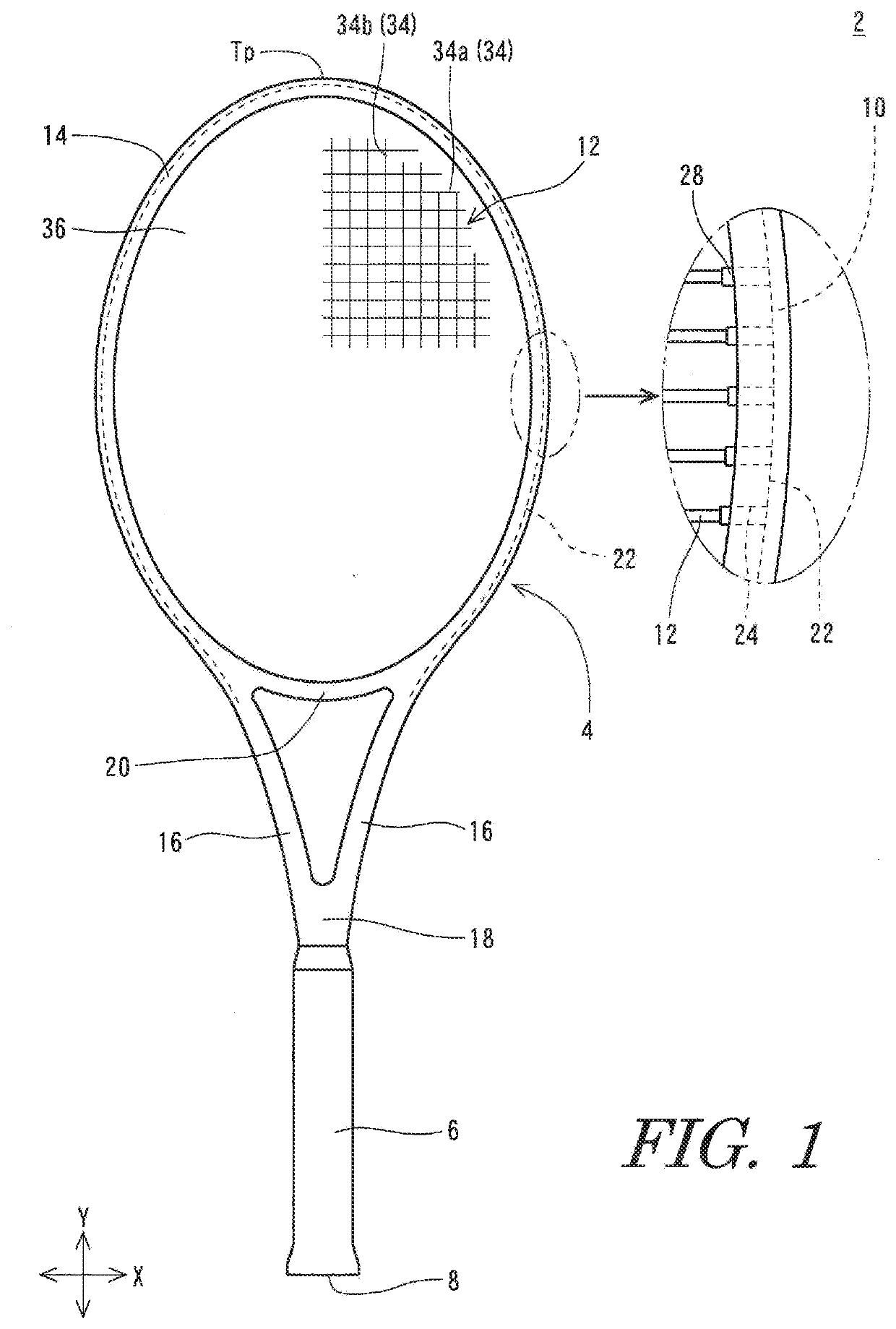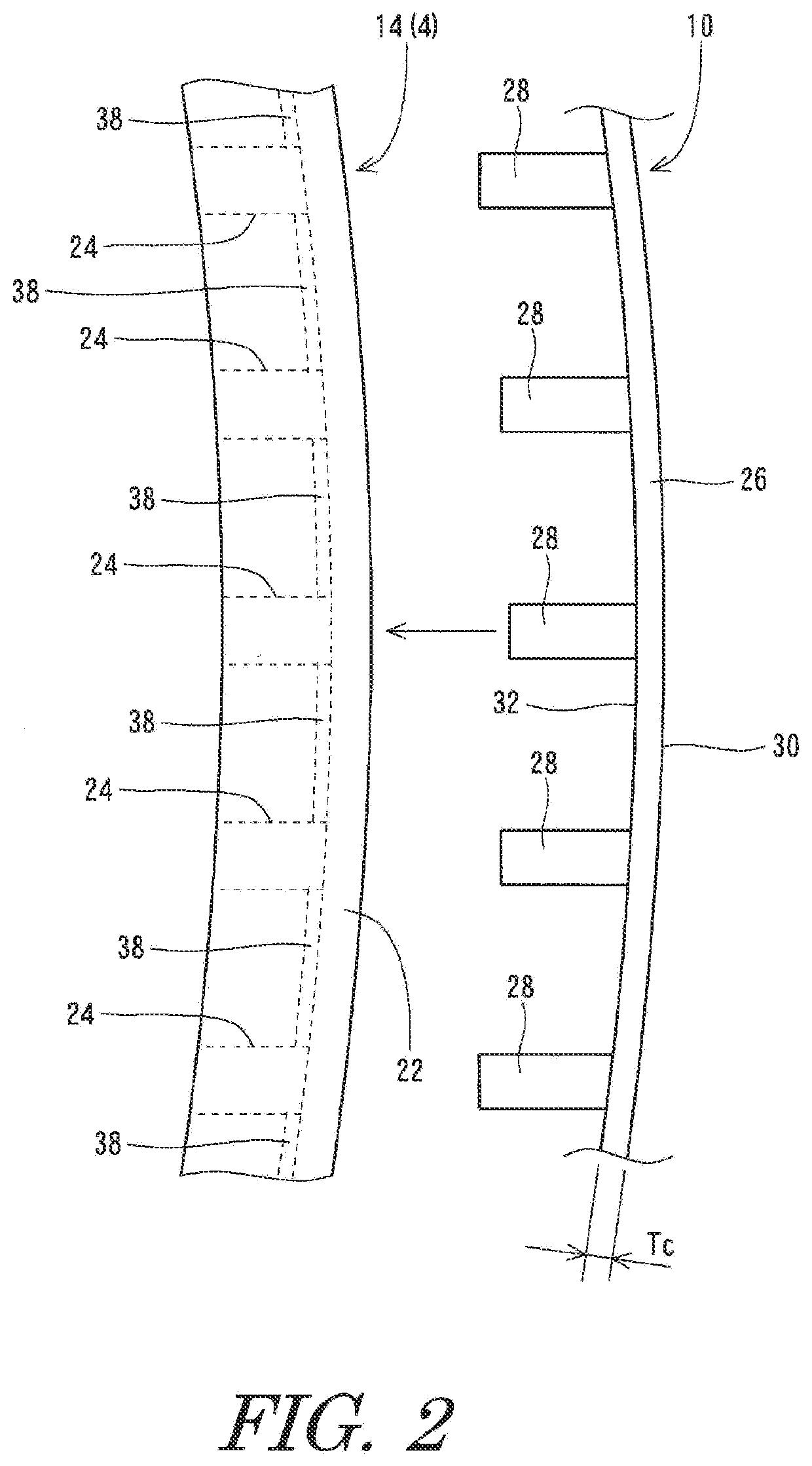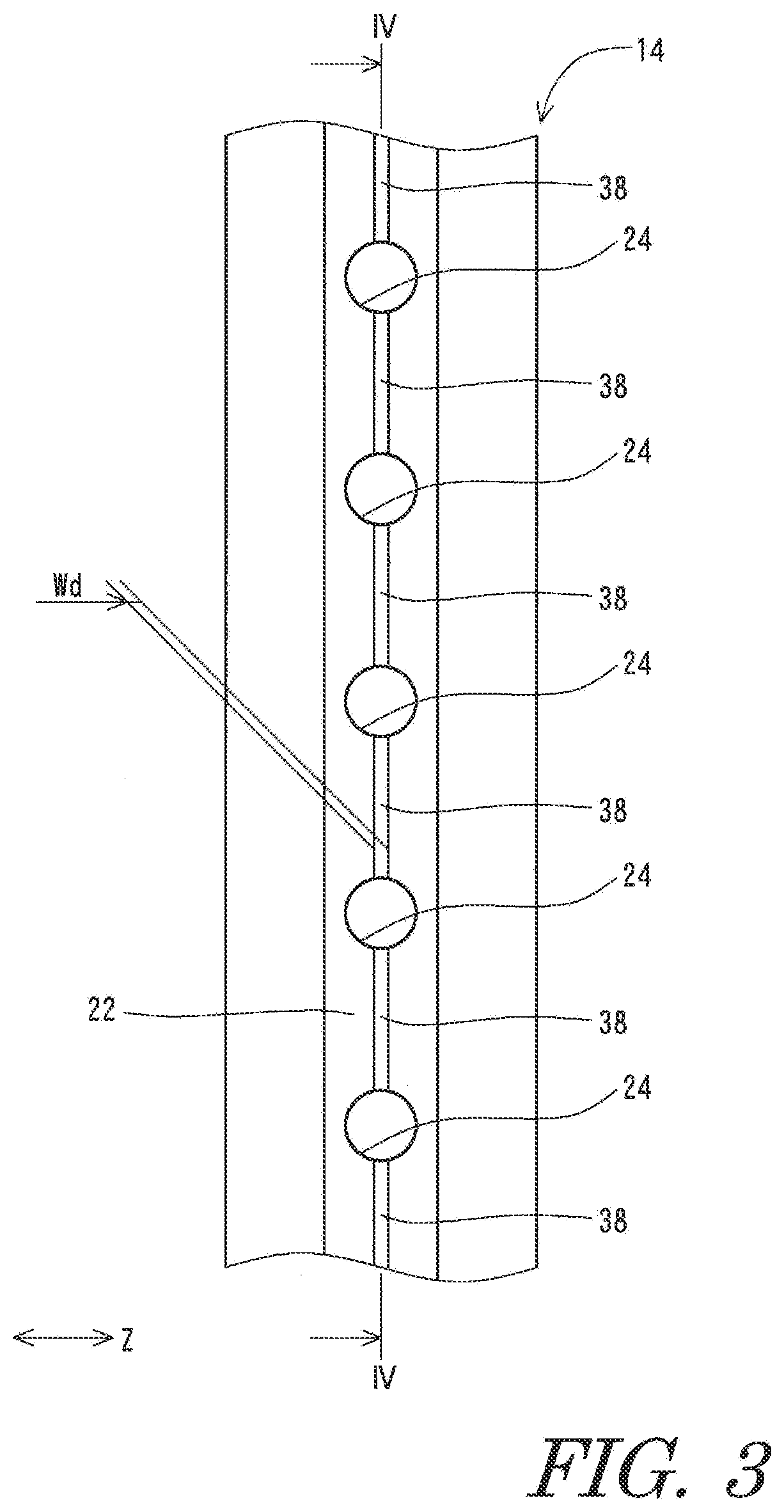Racket
a racket and racket body technology, applied in the field of rackets, can solve the problems of affecting the rebound performance and the appearance of the racket, the racket is large in mass, and the frame strength is affected, and achieves excellent rebound performan
- Summary
- Abstract
- Description
- Claims
- Application Information
AI Technical Summary
Benefits of technology
Problems solved by technology
Method used
Image
Examples
experiment 1
Example 1
[0067]The prepreg matrix resin was cured in the mold having the ridges, and thereby a frame was produced. By using the frame, the tennis racket shown in FIGS. 1 to 8 was obtained. The racket includes a large number of small grooves. The width Wd of each small groove is 1.0 mm. The depth Dp of each small groove is 0.5 mm.
experiment 2
[0071]For each of the tennis rackets of Example 1 and Comparative Example 1 used in Experiment 1, the rebound coefficient was measured at eight measurement points shown in Table 2 below. In Table 2, x is a distance in the X direction from an origin, and y is a distance in the Y direction from the origin. The origin is the top of the head.
TABLE 2Measurement points of the rebound coefficient.First measurement pointx = 0 cmy = 9 cmSecond measurement pointx = 0 cmy = 12 cmThird measurement pointx = 0 cmy = 15 cmFourth measurement pointx = 0 cmy = 18 cmFifth measurement pointx = 0 cmy = 21 cmSixth measurement pointx = 0 cmy = 24 cmSeventh measurement pointx = 0 cmy = 27 cmEighth measurement pointx = 0 cmy = 30 cm
[0072]FIG. 11 illustrates a graph showing the measurement results. In FIG. 11, the horizontal axis indicates the distance from the top to each measurement point, and the vertical axis indicates the rebound coefficient. It is clear from FIG. 11 that the tennis racket of Example 1 ...
experiment 3
Examples 2 to 4
[0073]Tennis rackets of Examples 2 to 4 were obtained in the same manner as Example 1, except that different molds were used in Examples 1 to 4, respectively. The groove sizes of these tennis rackets are shown in Table 3 below.
Rebound Coefficient
[0074]The rebound coefficient at the center of the face of each tennis racket was measured by using the same method as that of Experiment 1. The measurements results are shown in Table 3 below.
TABLE 3Measurement results of the rebound coefficient.WdDpRebound CoefficientExample 20.5 mm0.5 mm0.355Example 11.0 mm0.5 mm0.361Example 31.5 mm0.5 mm0.365Example 41.0 mm0.2 mm0.360Comp. Ex. 0 mm 0 mm0.346
[0075]It is clear from Table 3 that the tennis racket of each Example has excellent rebound performance.
PUM
 Login to View More
Login to View More Abstract
Description
Claims
Application Information
 Login to View More
Login to View More - R&D
- Intellectual Property
- Life Sciences
- Materials
- Tech Scout
- Unparalleled Data Quality
- Higher Quality Content
- 60% Fewer Hallucinations
Browse by: Latest US Patents, China's latest patents, Technical Efficacy Thesaurus, Application Domain, Technology Topic, Popular Technical Reports.
© 2025 PatSnap. All rights reserved.Legal|Privacy policy|Modern Slavery Act Transparency Statement|Sitemap|About US| Contact US: help@patsnap.com



